The CERBERUS 2080
By Michael Doornbos
- 3 minutes read - 585 wordsA few months ago, I stumbled on a project that really caught my attention. Mr. Bernardo Kastrup, aka TheByteAttic finished a video series on a computer he designed and built “by hand.”
It’s an impressive amount of information. Clocking in at more than 12 HOURS.

Total time of his videos
3 Headed Dog
Like the guardian of the gates of Hades, the board is a three-headed dog because it has 3 main processors. Yes, 3.
Most of the heavy lifting is done by an ATMega328p, and it has TWO modern versions of “retro” processors: a W65C02 and a Z80. Both can be clocked to 4 or 8Mhz, which is much faster than what these ran at back in the late 1970s.
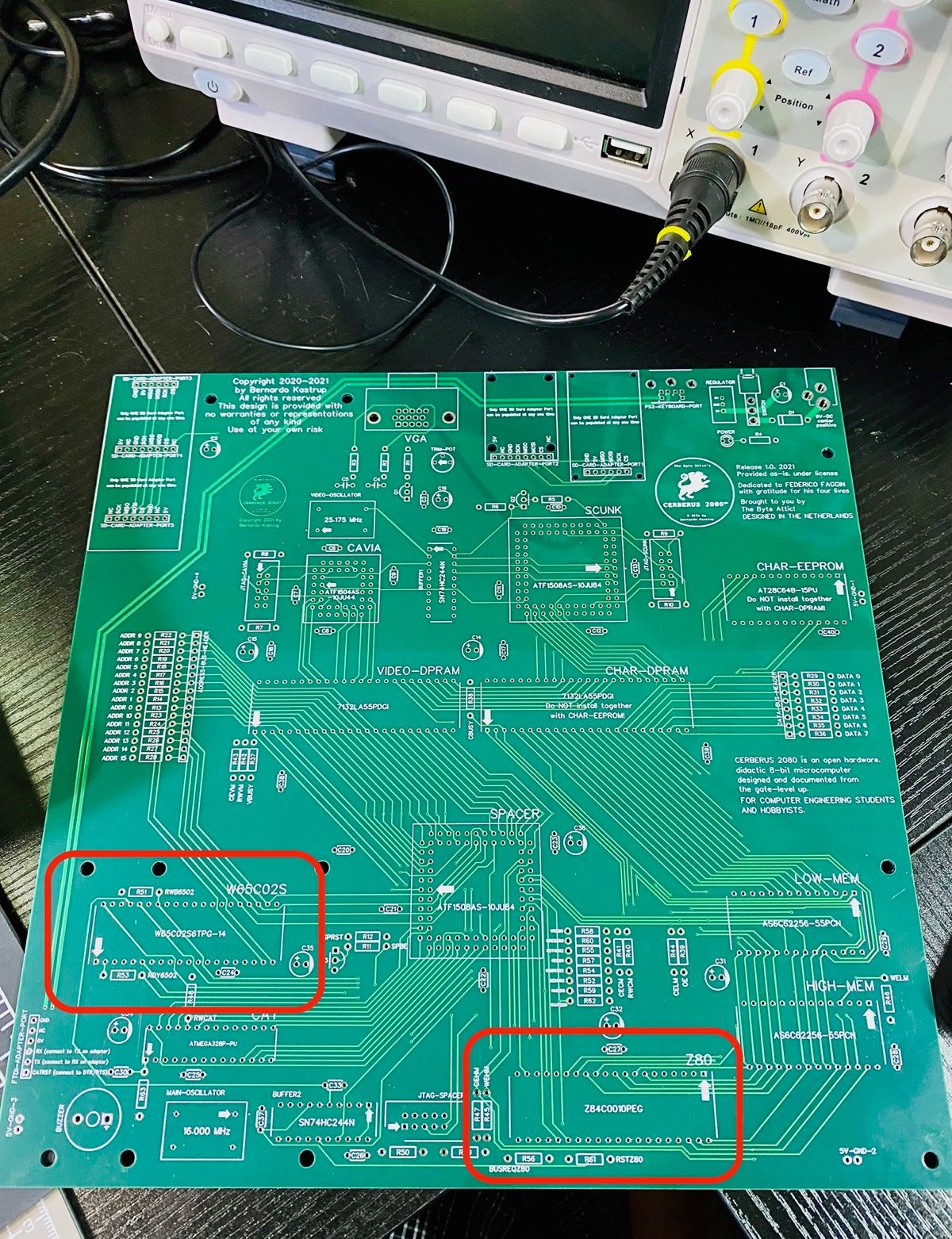
These are in close proximity; we’re not going to disrupt space/time with this, are we?
Why build this project?
One of the primary reasons to use an 8-bit computer in 2021 is because it’s possible for one person to really understand ALL of the components of how these computers work. And by ALL, I’m talking down to the gate level of the logic chips.
The CERBERUS project walks through this process, first creating a VGA video signal and then moving on to multi-port RAM and more than one processor.
The code and board designs are 100% open source.
What can you do with it?
It’s a didactic platform intentionally. Its primary use is as a learning tool. I’m not exaggerating when I say that I learned more building this than several of my last projects combined.
You can write and run machine code on it on either the 6502 or Z80. The ATMega handles all of the details, and then it sends it off to one of the processors when you actually run it.
Most of the learning for me happened by following along with the videos on the design process. Building it was pretty straightforward, although definitely NOT a beginner soldering project.
What is it lacking?
It’s hard to NOT compare it to 8-bit computers of the 70s and 80s. A HUGE learning advantage they have is that most of them boot right to BASIC. Love it or hate it, for the most part, BASIC is approachable. You can quickly get things done on one of these old computers with little training.
The CERBERUS is more like the first day in a graduate-level course when you turn it on. Powerful but not approachable.
Is this a problem? Not for me.
But I don’t see people jumping right into it as a first experience with “learning every part of a computer.” I’d suggest they go out and get a Commodore 64 first.
This platform is for people who want to get started in “retro” system design. Think of it as an advanced course in design and probably more complete than you’d get in your average college course since at the end, you get a working version of the “product.”

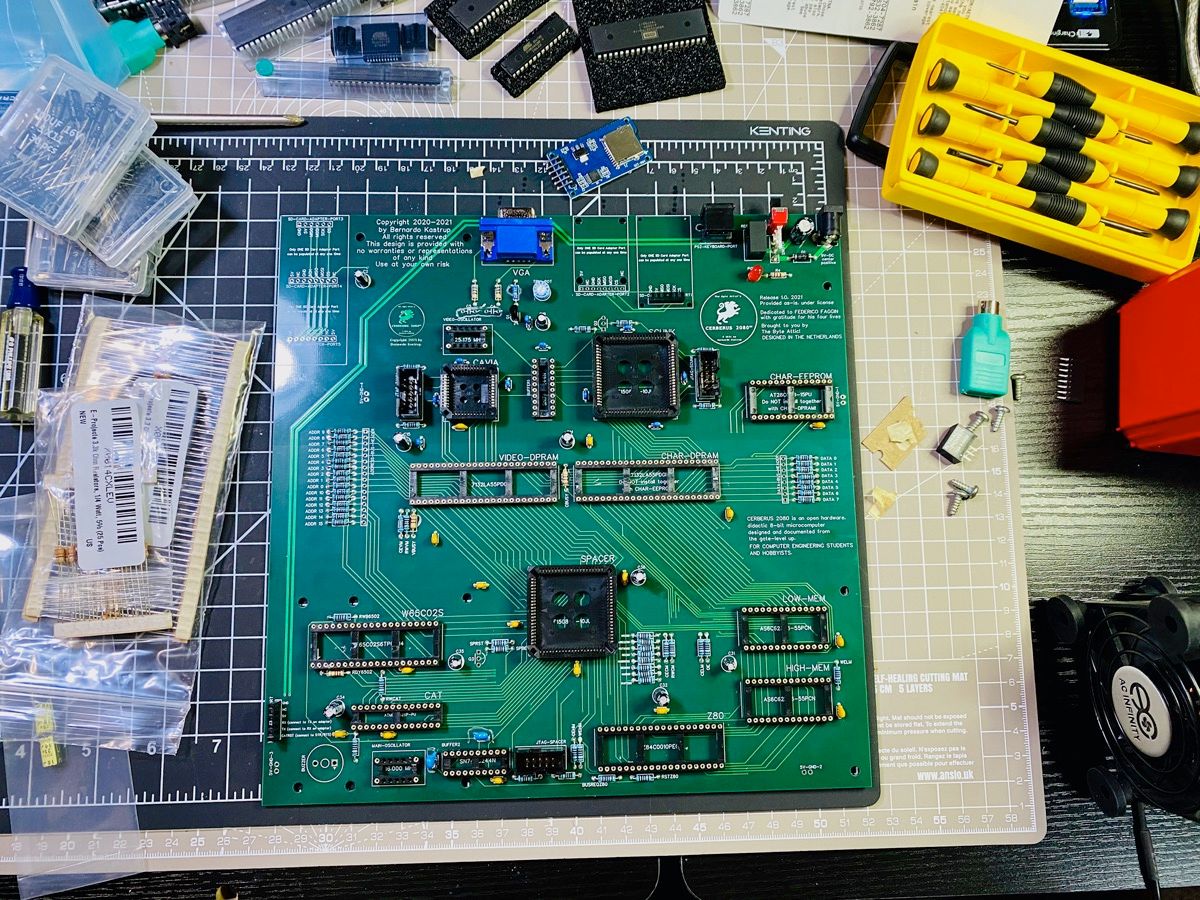
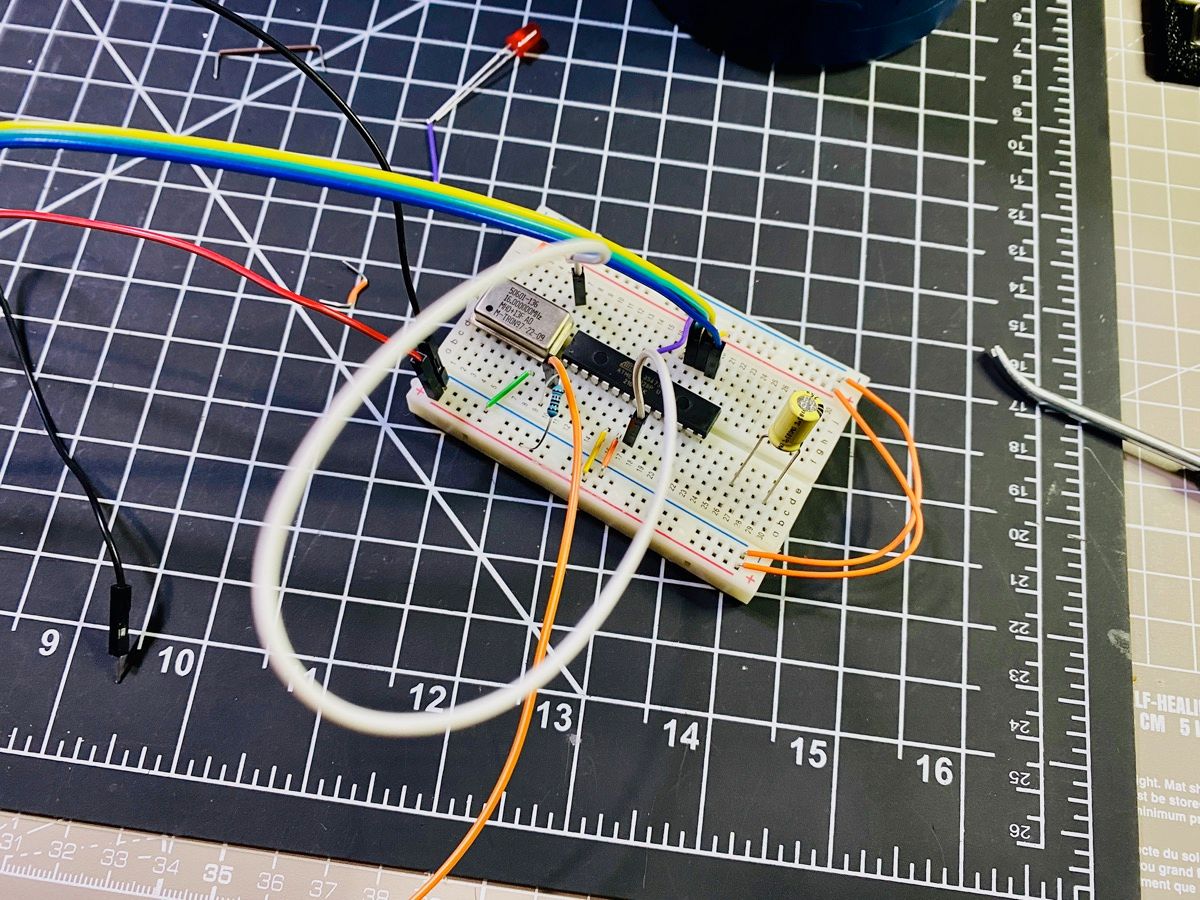
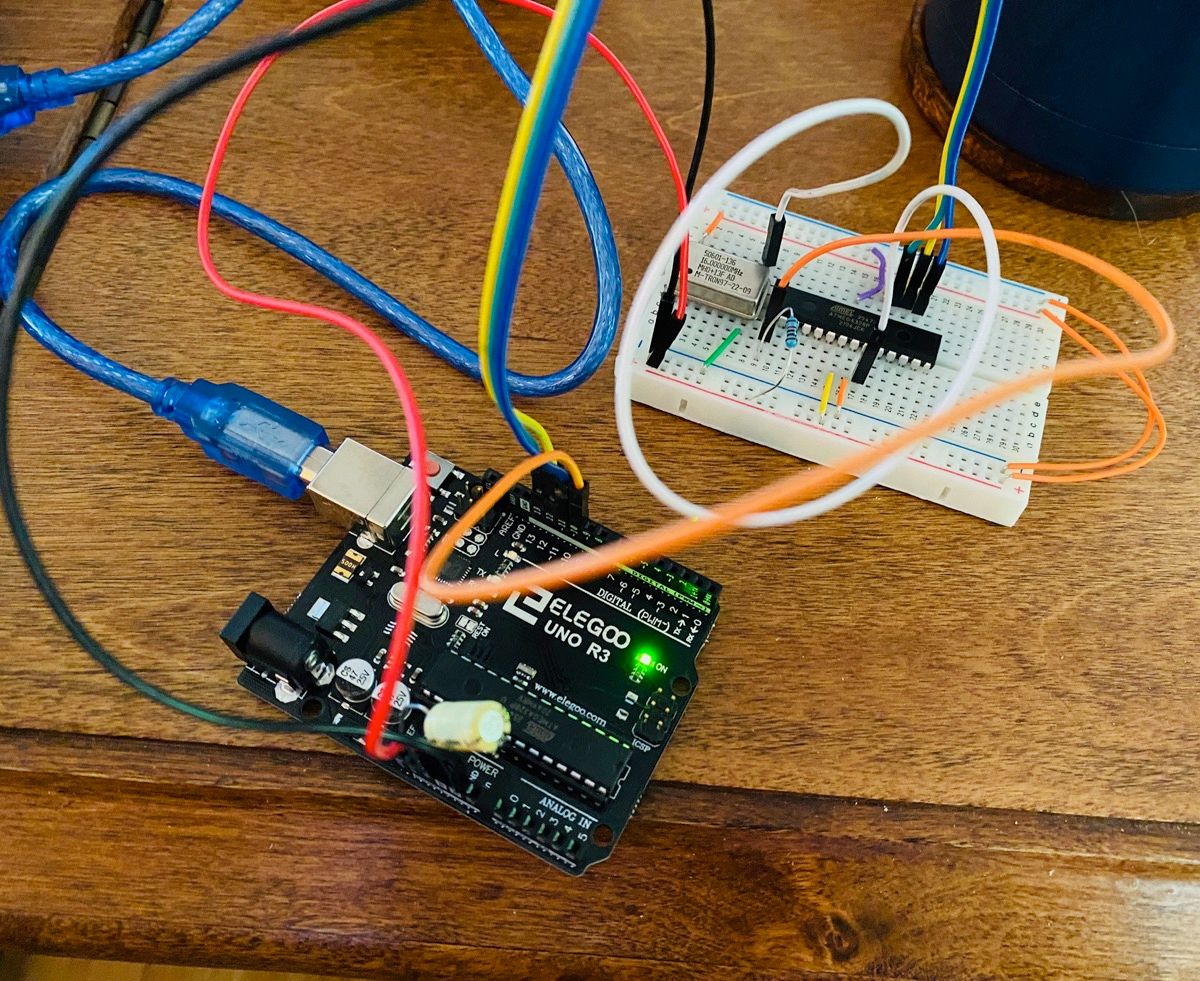
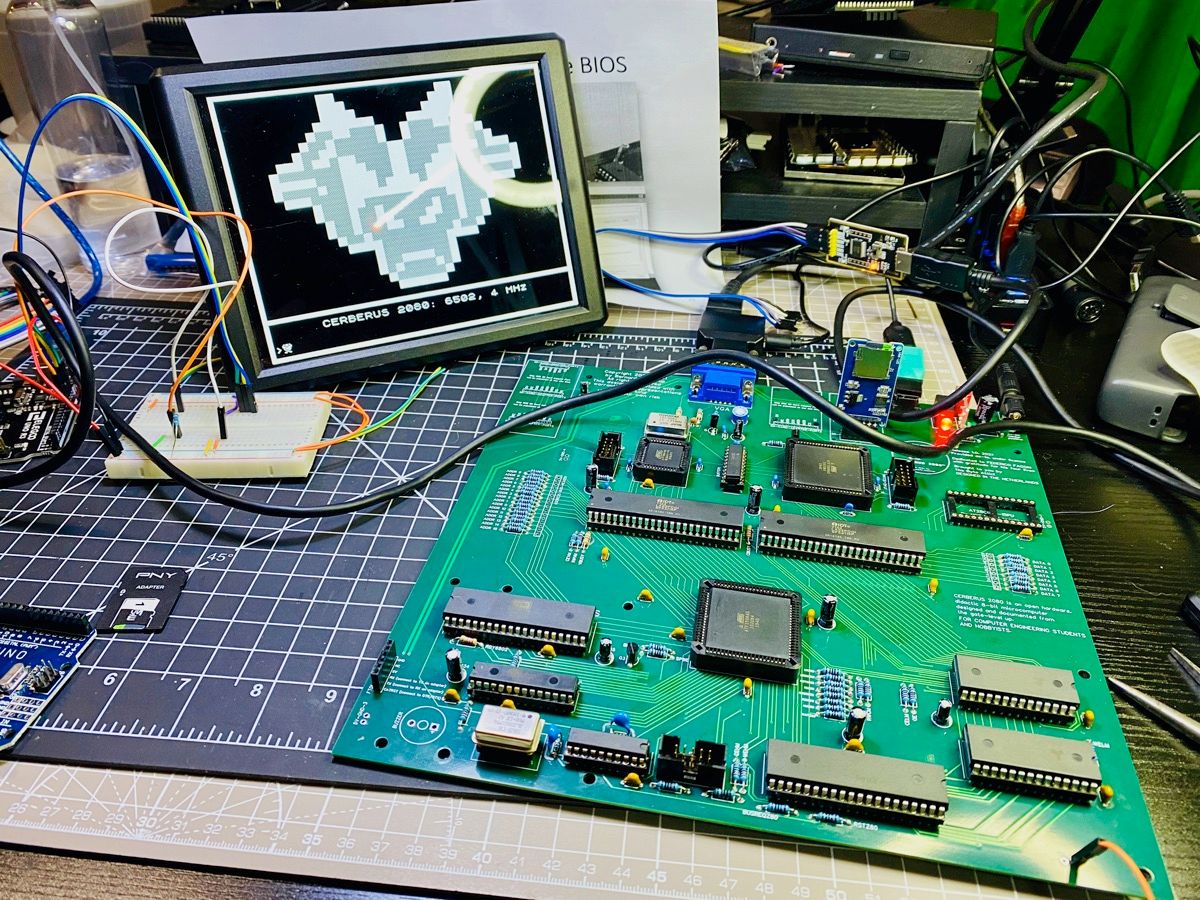
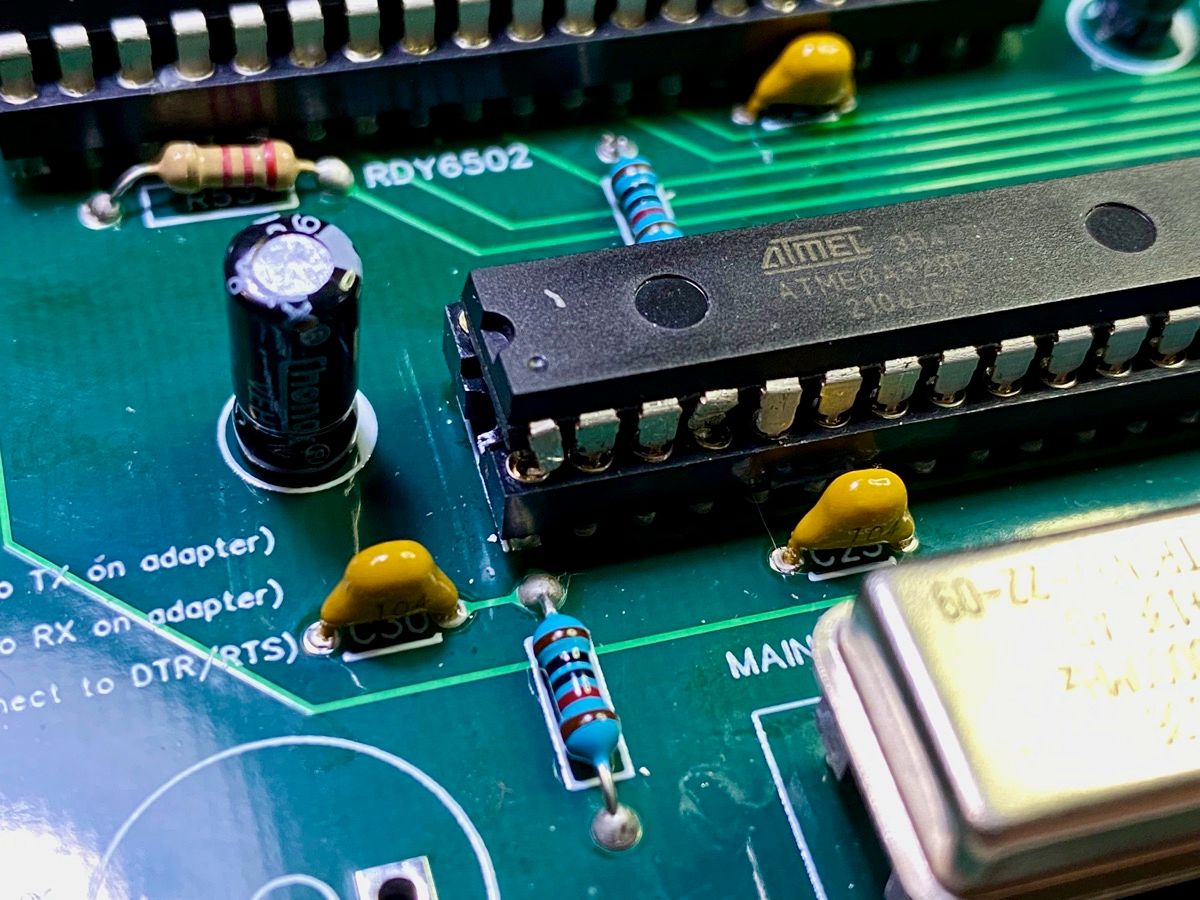

Things I will do differently
If I build a second one of these, I’ll be making a few changes.
Most importantly is that I’m going to use a more robust connector for the FTDI interface since it can be used as a serial communications port.
I also ended up with a very cheap 6 pin DIN for the PS/2 connection. In hindsight, I should have found much better connectors and not used this one.
If you’re looking for a fun project to stretch your skills quite a bit, the CERBERUS 2080 may be for you.